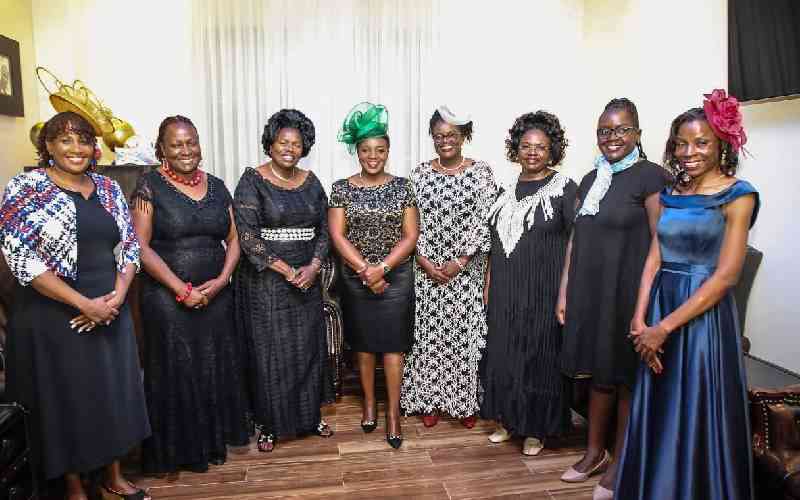Following the Supreme Court ruling directing Parliament to legislate a framework to realise the two-thirds gender rule as required by Article 81(b) of the Constitution, the Attorney General constituted a Technical Working Group (TWG).
The TWG recommended that “...the only proposed formulae that will realise the two-thirds gender rule with precision is amending the Kenya Constitution 2010. The amendment is to use the formulae that has worked for the county governments after the 2013 elections thus lifting Article 177 (1) (b) and (c) of the Constitution and importing it in Article 97 and 98 of the Constitution for representation in the National Assembly and Senate accordingly”.
But this proposal is a quick-fix intervention confined to the affirmative action sunset clause of 20 years. To be faithful to Article 81(b), the required mechanisms and formulae should work for posterity.
The importance of “equity of the vote” has been ignored and we base equity on the number of elected MPs, senators and MCAs a party gets. Nominations are determined by the number of elected candidates rather than the totality of the vote a party gets. Therefore, a party with more elected members but less votes gets more nomination slots than a party with more votes and less elected members. This disenfranchises many voters.
Thus, lifting Article 177 (1) (b) and (c) of the Constitution and importing it in Article 97 and 98 of the Constitution for representation in the National Assembly and Senate serves to institutionalise existing depravity in the “equity of the vote”.
Indeed, Article 177 is the offending article that should be amended because of its unintended contradiction of Article 81 on the determination of “equity of the vote” by aspiring to predetermine for Parliament the formulae for nomination to special seats.
My proposal is to realign the Kenyan representation and electoral system to variations of Mixed-Member Proportional Representation (MMP) or Proportional Representation (PR) systems currently in use in 90 democracies. The original version of the Constitution had this proposal before the Parliamentary Select Committee, of which I was part, mutilated it in Naivasha.
In such a system, the number of nominated seats in the Senate, National Assembly and County Assembly derived from a “flexible” party-list is allocated to parties proportionally to the number of votes the party receives at the ballot. The party lists will have gender pairing and should electoral results favour one gender, the list will be adjusted accordingly to fill the gap.
PR will mean the voter casts two votes; one for a single-member (constituency) representative and one for a party. Members of a party can choose not to vote for their party candidate but increase party representation through the party vote or vice versa. But it is only the party vote that will determine the number of nominees the party is entitled to.
The tedious clauses on compliance in the Elections, Political Parties and the IEBC Acts would also be replaced by simpler conformity procedures. Coalitions will, thus, only be possible after elections to prevent collusion and electoral boundary gerrymandering.
To avoid duplication and confusion, the voter will cast only one party vote that will count for all party nominations at all levels. A party must get a certain percentage of the total party vote to qualify to nominate from its party list.
A variation may be introduced so that county populations determine allocations of nomination seats available to that county. The number of nominees a party is entitled to per county will depend on the proportion of its party vote in that county. In many countries, the number of representatives is not predetermined but left to the fate of population shifts and electoral outcomes.
I am aware that PR may slightly increase the number of representatives but this is the price the country must pay to ensure every vote counts. However, the pros and cons of PR should be streamlined through technical input to arrive at a variance suitable to Kenya without overly burdening the taxpayer.
—The writer is the Amani Party leader.
Stay informed. Subscribe to our newsletter
 The Standard Group Plc is a
multi-media organization with investments in media platforms spanning newspaper
print operations, television, radio broadcasting, digital and online services. The
Standard Group is recognized as a leading multi-media house in Kenya with a key
influence in matters of national and international interest.
The Standard Group Plc is a
multi-media organization with investments in media platforms spanning newspaper
print operations, television, radio broadcasting, digital and online services. The
Standard Group is recognized as a leading multi-media house in Kenya with a key
influence in matters of national and international interest.
 The Standard Group Plc is a
multi-media organization with investments in media platforms spanning newspaper
print operations, television, radio broadcasting, digital and online services. The
Standard Group is recognized as a leading multi-media house in Kenya with a key
influence in matters of national and international interest.
The Standard Group Plc is a
multi-media organization with investments in media platforms spanning newspaper
print operations, television, radio broadcasting, digital and online services. The
Standard Group is recognized as a leading multi-media house in Kenya with a key
influence in matters of national and international interest.








